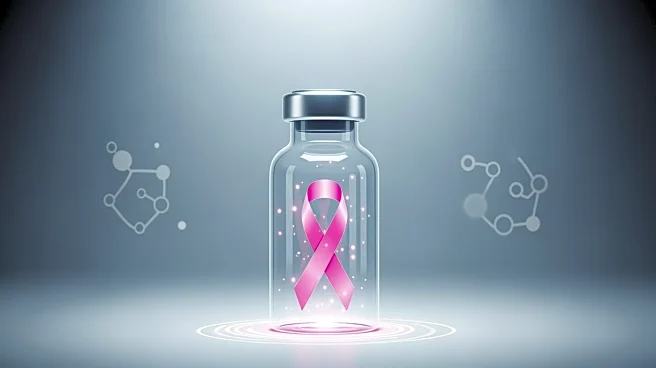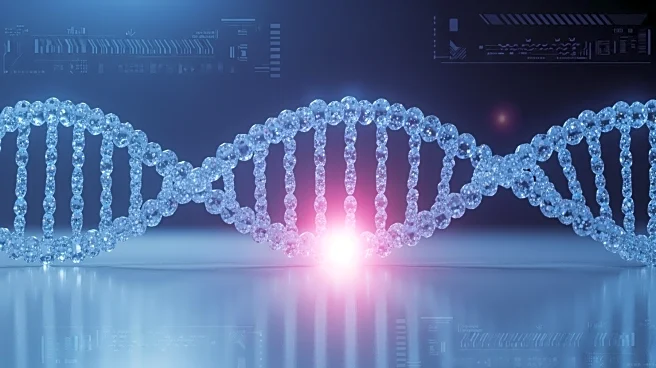What's Happening?
Scientists at the Francis Crick Institute and Vividion Therapeutics have developed chemical compounds that can prevent the cancer-driving gene RAS from interacting with a key pathway responsible for tumor
growth. This potential treatment is entering its first human clinical trial, aiming to treat various cancers while minimizing harm to healthy cells. The RAS gene, which controls cell growth and division, is mutated in approximately 20% of cancers, leading to continuous cell proliferation. The researchers identified compounds that block the interaction between RAS and the enzyme PI3K, which is crucial for normal cell function, including insulin regulation. The compounds were tested in mice with RAS-mutated lung tumors, successfully halting tumor growth without causing elevated blood sugar levels. The treatment also showed promise in mice with tumors carrying mutations in the HER2 gene, suggesting broader applicability across different cancer types.
Why It's Important?
The development of this therapy is significant as it addresses the challenge of targeting the RAS gene, which is implicated in a wide range of cancers. By specifically blocking the interaction between RAS and PI3K, the therapy aims to suppress tumor growth while preserving normal cellular functions, potentially reducing side effects associated with current treatments. This approach could lead to more effective cancer therapies, benefiting patients with RAS and HER2 mutations. The initiation of clinical trials marks a critical step in translating this scientific discovery into a viable treatment option, potentially improving outcomes for cancer patients and advancing the field of oncology.
What's Next?
The therapy has entered its first clinical trial in humans to evaluate safety and side effects in patients with RAS and HER2 mutations. The trial will also assess the efficacy of the treatment in combination with other drugs targeting RAS. If successful, this could pave the way for new cancer treatment protocols that offer more targeted and less harmful options for patients. The ongoing research and trials will determine the potential for broader application across different cancer types, potentially leading to a significant shift in cancer treatment strategies.
Beyond the Headlines
This development highlights the importance of interdisciplinary collaboration in scientific research, combining chemistry and biology to address complex medical challenges. The ability to selectively target cancer growth signals while preserving healthy cell functions represents a novel approach that could inspire further innovations in cancer therapy. Additionally, the research underscores the potential of small molecule drugs in precision medicine, offering hope for more personalized and effective treatments.











